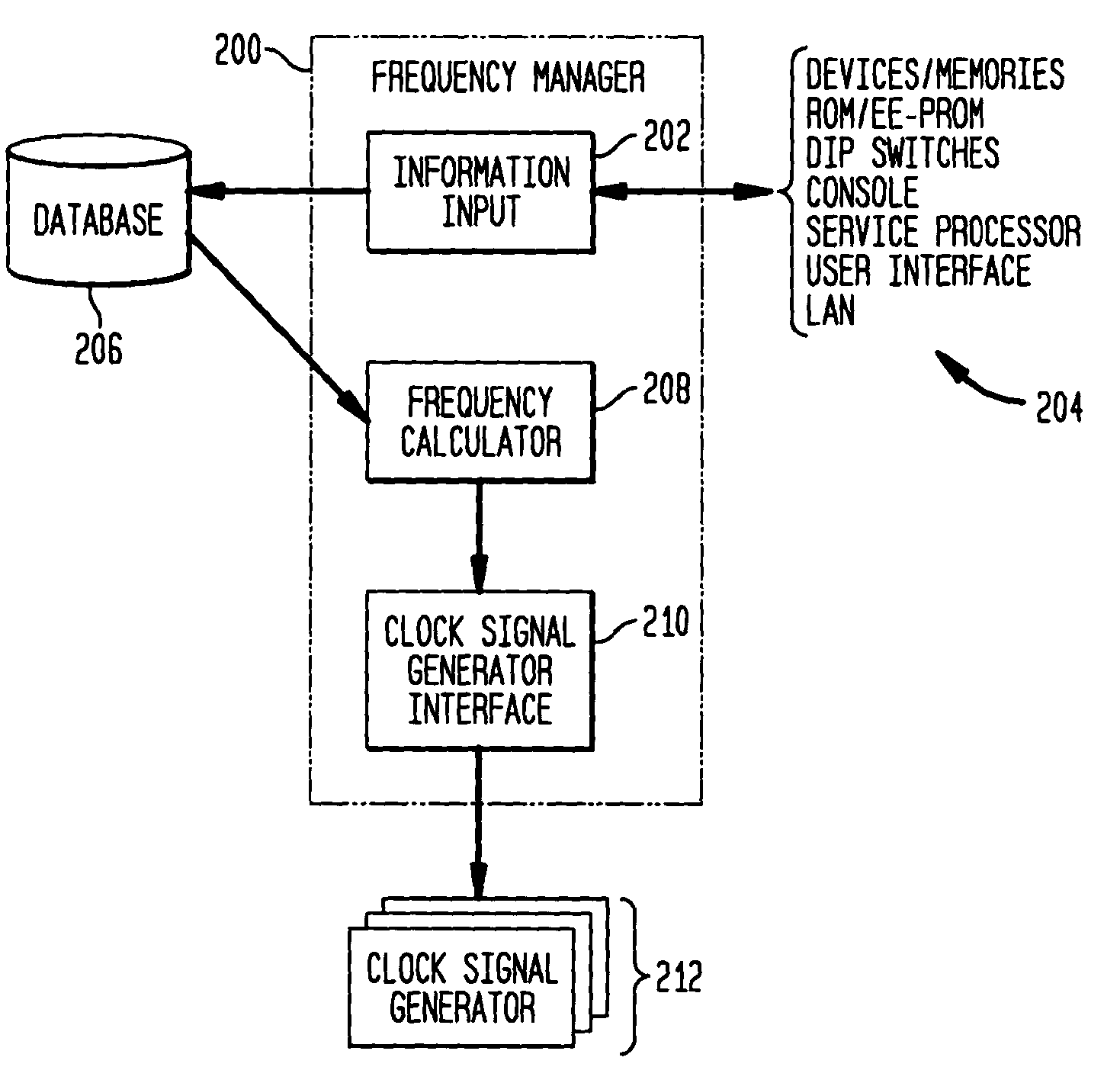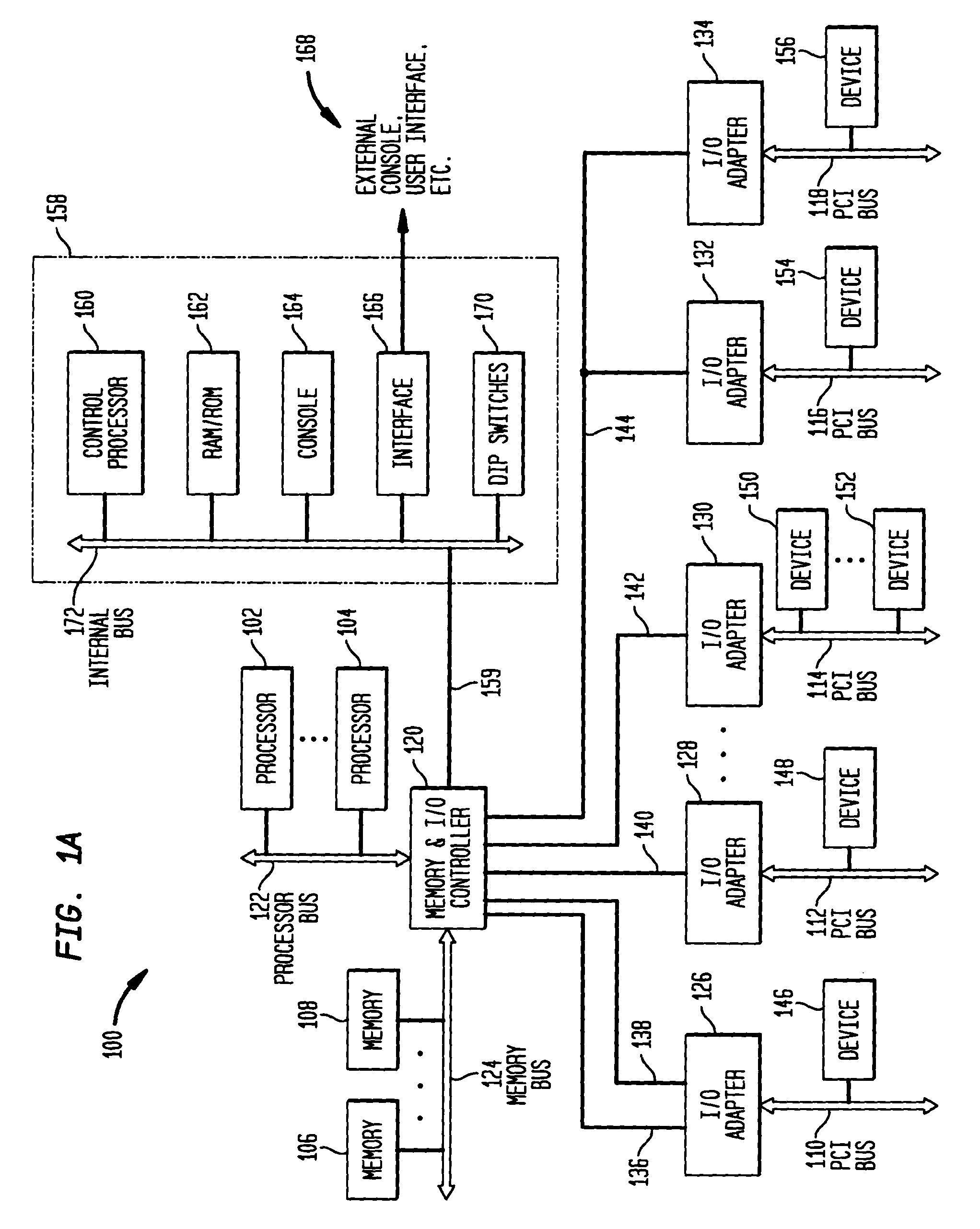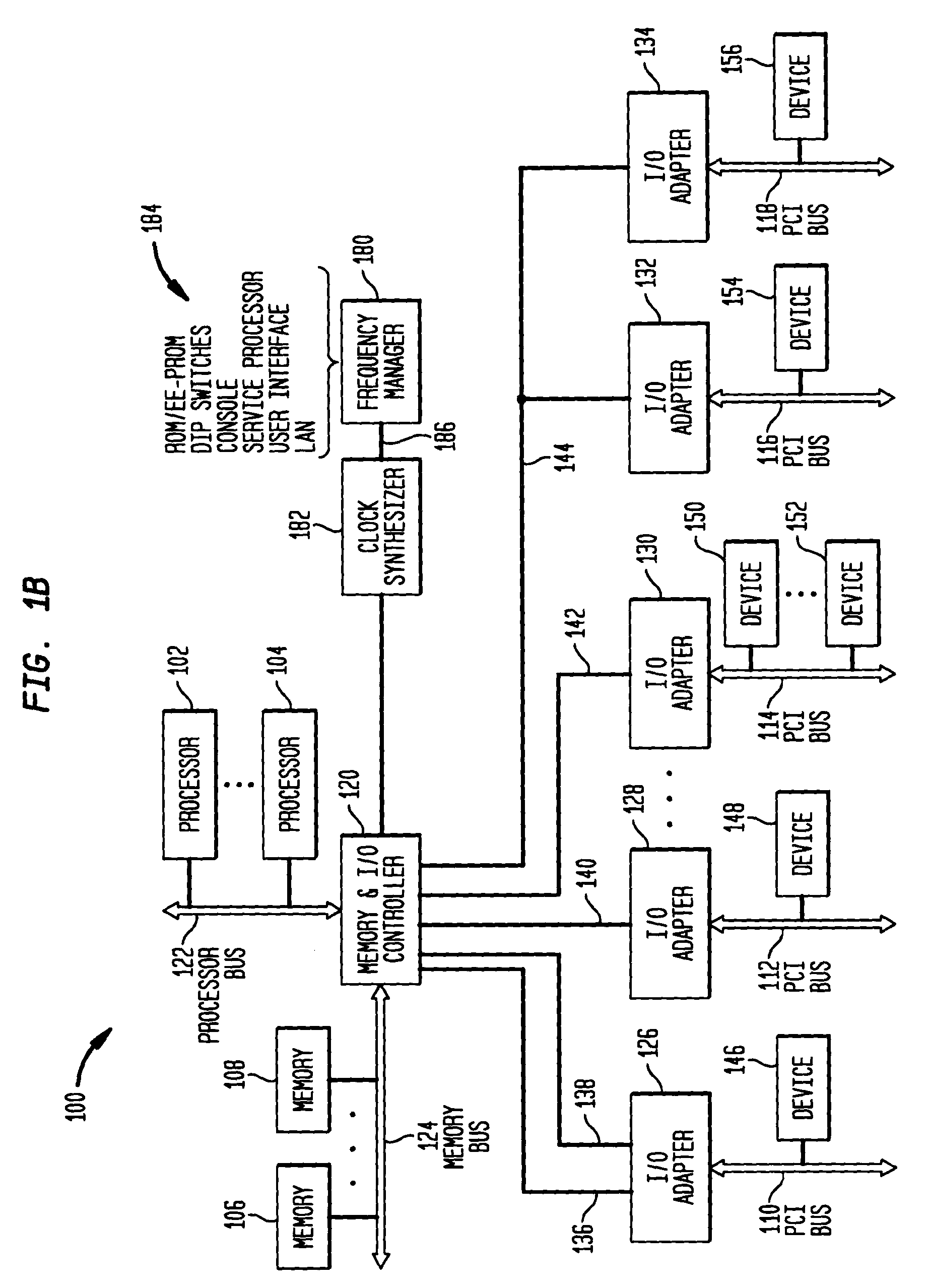Bus clock frequency management based on device load
a bus clock frequency and bus clock technology, applied in the direction of generating/distributing signals, instruments, data switching networks, etc., can solve the problems of heat dissipation, electrical devices consume electricity and waste heat, damage electronic devices, etc., and achieve the effect of reducing the number of bus clocks
- Summary
- Abstract
- Description
- Claims
- Application Information
AI Technical Summary
Benefits of technology
Problems solved by technology
Method used
Image
Examples
Embodiment Construction
[0028]The present invention provides apparatus and methods for determining and controlling clock speed(s) (also herein referred to as “clock frequency(ies)”) for one or more devices in a system so as to optimize performance of the devices without exceeding the system's power / thermal budget. The devices can be expansion cards or modules that plug into sockets, discrete or integrated circuits permanently connected to circuit boards or plugged into sockets, daughter cards, processors, memories or the like or combinations thereof. These devices typically connect to buses or other circuits that supply the devices with clock signals (hereinafter collectively referred to as “buses”), which determine the speeds at which these devices operate and, consequently, the amounts of power these devices consume and the amounts of heat these devices dissipate. Embodiments of the invention provide “frequency managers” and related components, as well as methods, to automatically select a clock frequenc...
PUM
 Login to View More
Login to View More Abstract
Description
Claims
Application Information
 Login to View More
Login to View More - R&D
- Intellectual Property
- Life Sciences
- Materials
- Tech Scout
- Unparalleled Data Quality
- Higher Quality Content
- 60% Fewer Hallucinations
Browse by: Latest US Patents, China's latest patents, Technical Efficacy Thesaurus, Application Domain, Technology Topic, Popular Technical Reports.
© 2025 PatSnap. All rights reserved.Legal|Privacy policy|Modern Slavery Act Transparency Statement|Sitemap|About US| Contact US: help@patsnap.com



